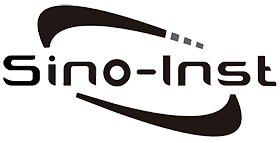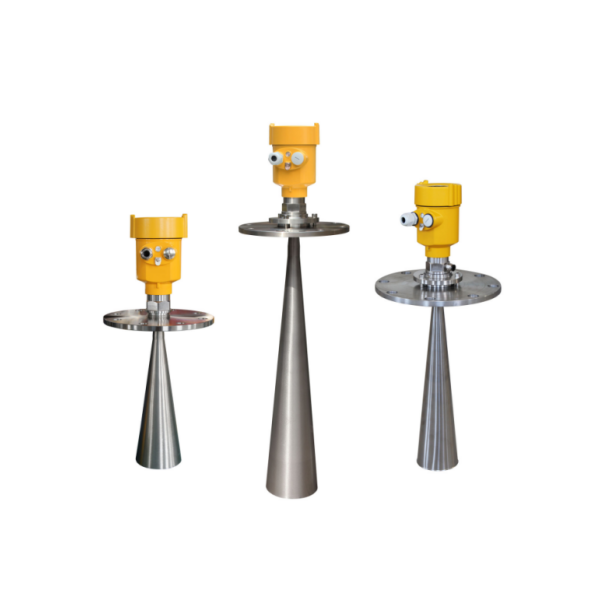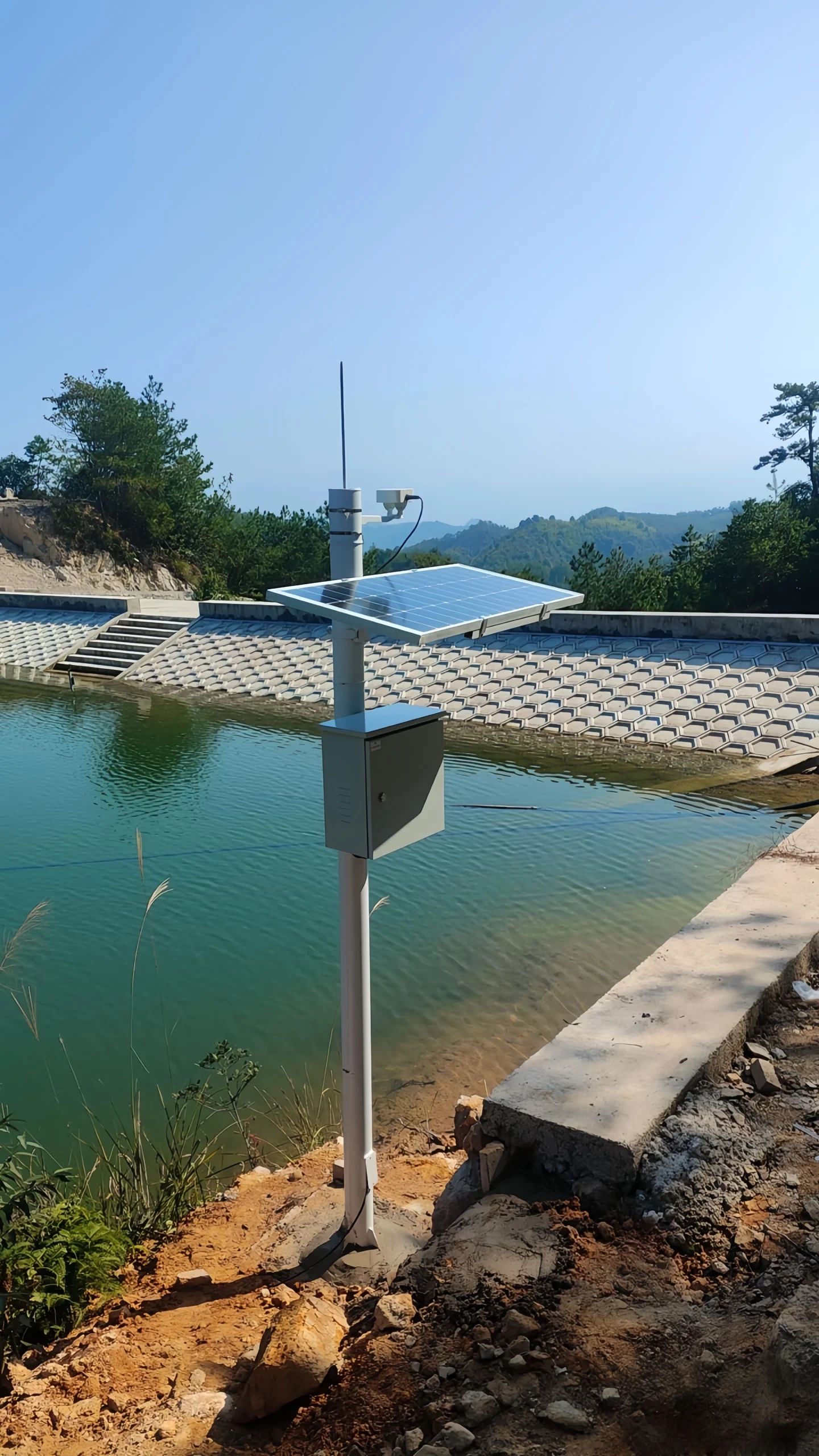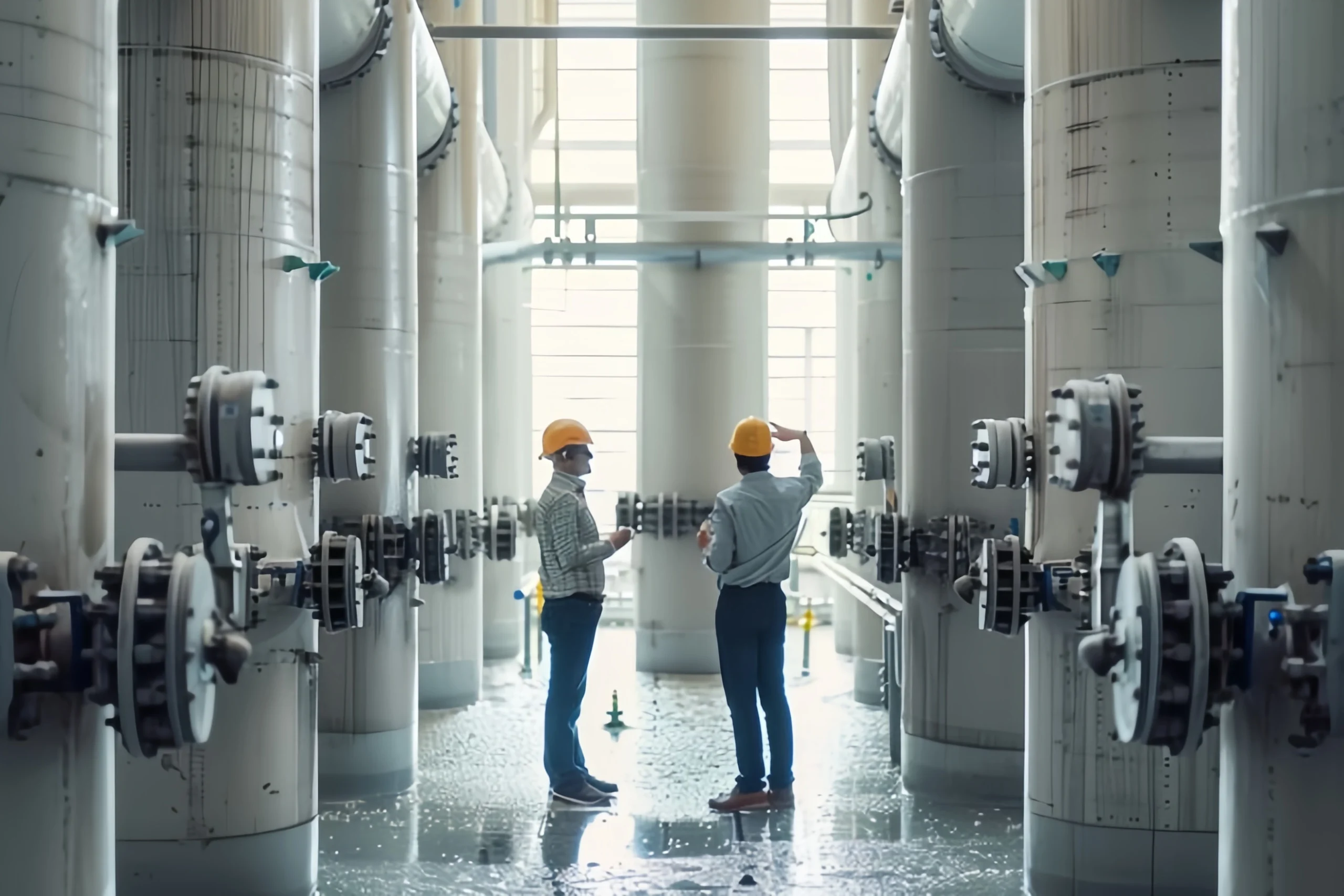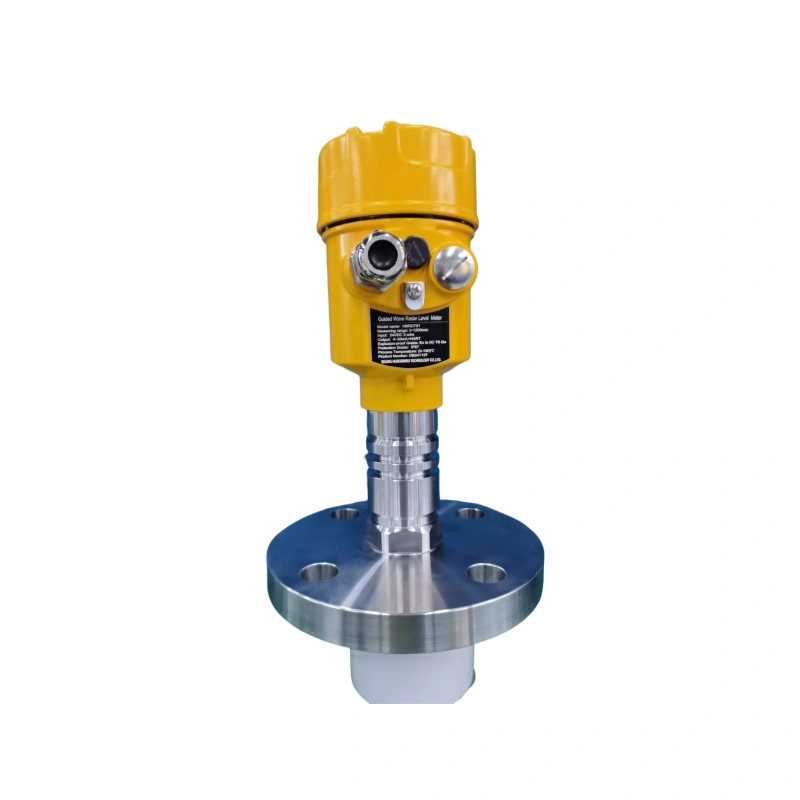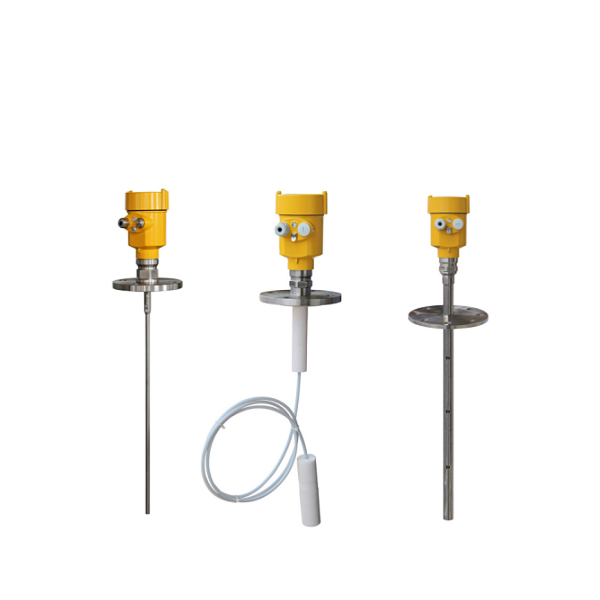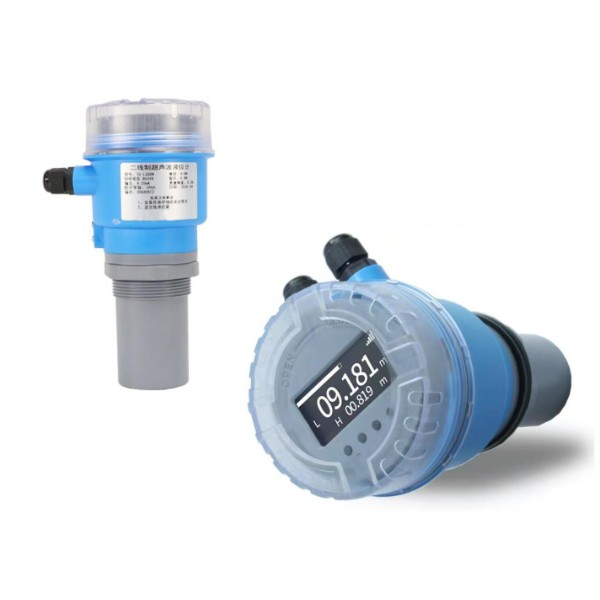In today’s industrial processes, accurate and reliable liquid level measurement is crucial. Radar level sensors offer a reasonable solution for monitoring liquids and solid bulk materials. Understanding radar level sensors is necessary for selecting the ideal sensor to meet your specific needs. One of the key components of a radar level sensor is the antenna. It determines the signal transmission characteristics, measurement accuracy, and application range.
This post details the relevant knowledge of radar level sensors and the types of antennas. Hopefully, this article will help you find the perfect radar level sensor.
What is a Radar Level Sensor?
A radar level sensor is a device that measures liquid level using the principle of electromagnetic wave reflection.
A radar level sensor transmits electromagnetic wave signals through an antenna. When the electromagnetic wave meets the surface of the medium, it is reflected and received by the antenna.
Based on the time differences between the transmitted and received signals, combined with the propagation speed of microwaves, the distance between the sensor and the medium can be calculated. Finally, we can confirm the level of the medium.
Microwaves have good penetration and stability, so radar level sensors operate smoothly in harsh environments.
Benefits of radar level sensors:
- Customization supported;
- Wide applicability, capable of measuring almost all media;
- Accurate, safe, and energy-efficient;
- Suppresses interference echoes;
- Easy to maintain and operate;
- Self-calibration function, high reliability.
Read More about:
An Overview of Radar Level Transmitter
Radar Level Transmitter and Guided Wave Radar Level Transmitter: The Real Difference
Guided Wave Radar Level Sensor Installation and Maintenance
An Overview of Guided Wave Radar Level Sensor
Radar Level Transmitter Vs Ultrasonic Level Transmitter—for Level Measurement
Types of Radar Level Sensors
Based on the type of signal emitted by the radar level sensor, we mainly classify radar level sensors into the following categories:
| Types | Frequency range | Measurement range | Typical accuracy | Applicable Scenarios |
| Pulse radar | 6-26GHz | 0-70m | ±3mm | Crude oil storage tanks, cement silos |
| FMCW radar | 24-26GHz | 0-30m | ±1mm | Chemical storage tanks, reaction vessels |
| Guided wave radar | 1-2GHz | 0-6m | ±0.5mm | Viscous media, small-range measurement |
| 80GHz radar | 78-82GHz | 0-150m | ±1mm | LNG storage tanks, large silos |
Radar Level Sensor Antenna Types
The antenna is a key component of a radar level meter. It directly affects measurement accuracy, applicability, and installation environment. Depending on different operating conditions and media characteristics, radar level sensor antennas can be classified into the following main types:
Flame Antenna:
The flare antenna is one of the most common radar level sensor antenna types. It has good focusing characteristics. It is suitable for most applications, especially for measuring non-corrosive media. By emitting spherical waves, it effectively reduces interference from condensate. It is suitable for scenarios such as domed tanks and internal floating roof tanks. Furthermore, flare antennas are relatively easy to install and usually do not require waveguides. However, they are not suitable for various harsh conditions. such as asphalt or viscous liquids.
Parabolic Antenna:
Parabolic antennas use point-source radiation to form a narrow beam. They are suitable for high-temperature and high-pressure environments and applications requiring high-precision measurements. They are usually used for level measurement in large storage tanks. such as for residual oil and asphalt. It offers high measurement accuracy and stability. A parabolic antenna is suitable for installation close to the tank wall, but installation conditions are relatively demanding.
Bar Antenna:
Bar antennas are usually made of corrosion-resistant materials such as PTFE or polypropylene. They are suitable for measuring highly corrosive media. Their characteristics include a large emission angle and lower accuracy, but they are inexpensive and easy to install. These make them suitable for small containers or applications with high corrosive media concentrations.
Planar Conical Antenna:
Planar conical antennas are also known as planar array antennas. They have good directivity and focusing capabilities. They are suitable for measurements in floating roof tanks, high-temperature, high-pressure environments, and steam and powder storage tanks. This type of antenna generates a helical wave by emitting radar waves from multiple sources. These result in concentrated energy and minimal influence from the waveguide wall.
Teardrop Antenna:
A teardrop antenna is a specially designed radar level sensor antenna. Extending the radar wave transmitter to a certain distance above the container using an extension rod avoids interference from condensate. It is particularly suitable for high-temperature oil and steam applications. It offers advantages such as preventing condensation and material buildup.
Waveguide Antenna:
Waveguide antennas are usually used in internal floating roof tanks or applications requiring high-precision measurements. The waveguide transmits radar waves into the tank, thereby reducing external interference and improving measurement accuracy. This type of antenna is not suitable for corrosive media, condensation, or material buildup conditions.
Besides the types mentioned above, there are also specially designed radar level sensor antennas. such as integrated antennas and lens antennas. These antennas are typically used in specific applications or industries. For specific antenna applications, please contact us.
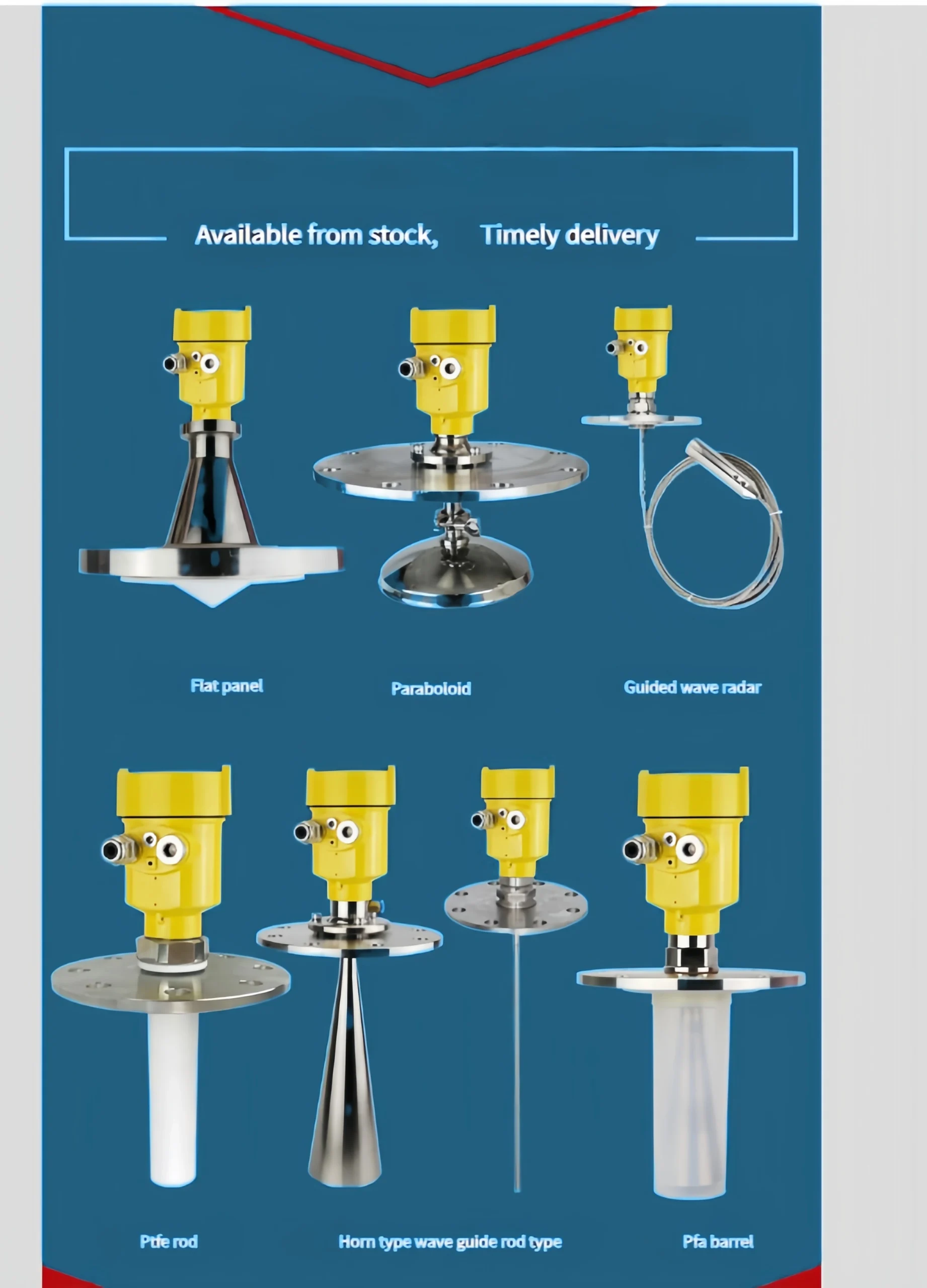
Sino-Inst Featured Radar Level Sensor
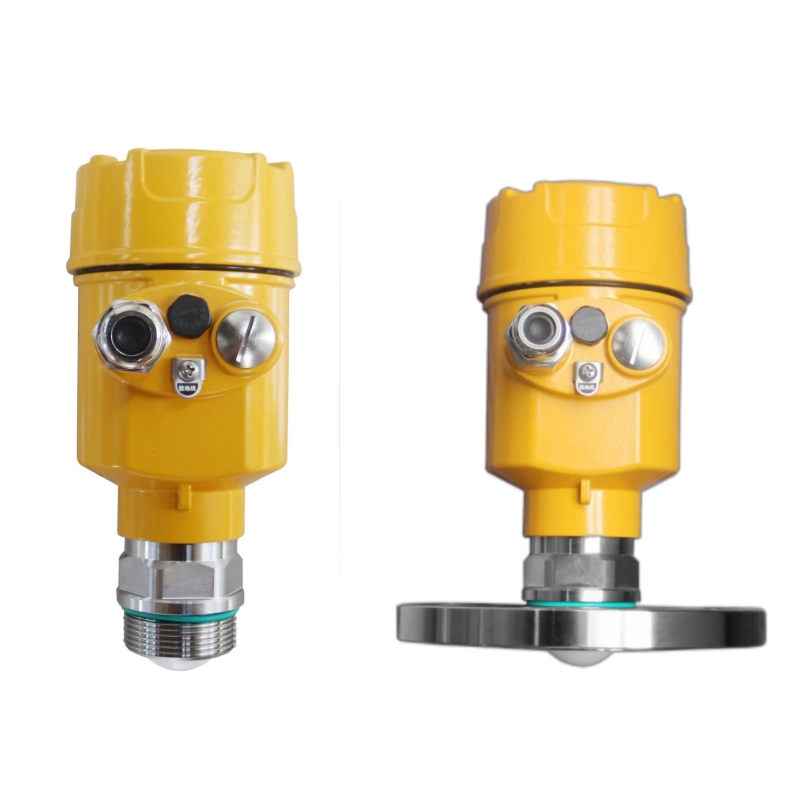
How to Choose the Right Radar Level Sensor Antenna?
We have summarized the following four common antenna types for your reference.
Horn-shaped (conical) antenna radar level sensor:
This is the most common antenna type, applicable in most situations, and can be directly installed without a waveguide. However, this type of antenna is not suitable for measuring corrosive liquids or solids.
Parabolic antenna radar level sensor:
Unaffected by steam, it is particularly suitable for measuring the level of large storage tanks with heating steam, such as tanks for residual oil and asphalt. The measuring range can reach over 35m.
Rod antenna radar level sensor:
It is suitable for highly corrosive media and situations with limited installation space.
Planar array radar level sensors:
They are suitable for installation in waveguides, used in floating roof tanks, etc.

Radar Level Transmitter Frequency Range:
Due to the frequency of the transmitted radar waves, radar level sensors can be divided into high-frequency and low-frequency types.
High-frequency radar level sensor usually refers to radar level sensors with a transmission frequency above 20GHz.
Low-frequency radar level sensors emit microwave frequencies between 100MHz and 6MHz, with longer wavelengths. They are mainly used for measuring liquid media and small measuring ranges. When we select a radar level sensor, the actual measurement requirements and environmental conditions must be considered.
Below are specific applications of high-frequency radar and low-frequency radar:
Solid Media Measurement:
High-frequency radar has better directionality and energy concentration, which makes it more suitable for measuring solid media. It is particularly suitable for solid materials with complex shapes and large angles of repose.
Liquid Media Measurement:
Due to its longer wavelength, low-frequency radar is better suited for liquid media measurement. It is especially used in small-scale liquid measurements.
Large Storage Tank Measurement:
High-frequency radar has a wider measurement range, which makes it suitable for large storage tanks or applications requiring long-distance measurements.
Harsh Environments:
High-frequency radar antennas are smaller and can be fitted with radomes. It is more suitable for harsh environments susceptible to pollution and humidity.
Selection of Different Containers and Different Media:
Radar level sensors are commonly used for level measurement in various containers, towers, spherical tanks, floating roof tanks, etc. In the petroleum, chemical, and food industries.
Radar level sensors can monitor and measure the level of liquids or solid particulate materials in storage tanks. In terms of tank shape, radar level sensors can measure the liquid level in spherical tanks, horizontal tanks, cylindrical tanks, and cylindrical-conical tanks. In terms of tank function, they can measure the liquid level in storage tanks, buffer tanks, microwave tubes, and bypass pipes.
Radar level sensors have a wide range of applications. In terms of the measured medium, they can measure liquids, particles, slurries, etc.
The selection of a radar level sensor for the medium mainly considers the following three points:
Dielectric constant:
The dielectric constant is one of the vital factors that affect the performance of a radar level sensor. In general, the higher the dielectric constant, the stronger the reflected signal, and the easier and more accurate the measurement.
For liquids with low dielectric constants, such as LNG, low-frequency radar level sensors are required. For liquids with high dielectric constants, such as water, high-frequency radar level sensors are more suitable.
Corrosivity:
If the measured medium is corrosive, a radar level sensor made of corrosion-resistant materials, such as stainless steel, Hastelloy, or PTFE for the antenna and housing, is required to ensure the sensor’s service life and stable performance.
Volatility and Viscosity:
For volatile or highly viscous media, such as asphalt and liquid sulfur, radar level sensors capable of overcoming these effects should be selected, or corresponding measures should be taken, such as adding waveguides, to improve measurement accuracy.

Guided Wave Radar Level Sensors vs. Non-Contact Radar Level Sensors
Guided wave radar level sensors are contact-based measurements. Non-contact radar level sensors are ordinary radar level sensors.
Radar level sensors are non-contact, while guided wave level sensors are contact-based. This means that guided wave level sensors cannot be used in applications with high food-grade requirements.
Guided wave radar level sensors require greater consideration of the corrosiveness and adhesiveness of the medium. And it has an excessively long guided wave radar is more difficult to install and maintain. In low dielectric constant conditions, both radar and guided wave radar measurement principles are based on the difference in dielectric constant of the medium. Because the waves emitted by ordinary radar are divergent, when the dielectric constant of the medium is too low, the signal is too weak and the measurement is unstable.
Guided wave radar waves propagate along the waveguide rod. It results in relatively stable signals. Furthermore, typical guided wave radars have bottom detection capabilities. It allows for the correction of the measured value based on the bottom echo signal, making the signal more stable and accurate.
Ordinary radars are interchangeable, while guided wave radars, due to the fixed length of the waveguide rod based on the original working conditions, are generally not interchangeable. This makes the selection of guided wave radars more complicated than that of ordinary radars.
Ordinary radars are commonly used in tanks of 30-40m in length, and can even measure up to 150m. Guided wave radars must also consider the stress on the waveguide rod (cable), which limits their measurement distance.
However, guided wave radars have significant advantages in certain special working conditions. such as when there is agitation inside the tank and the medium fluctuates greatly. In such conditions, the measured values of a bottom-fixed guided wave radar are more stable than those of ordinary radars.
Also, for level measurement in small tanks, where the installation space is limited (or there are many interfering objects inside the tank), ordinary radars are generally unsuitable. In these cases, the advantages of guided wave radars become apparent.
What are the disadvantages of radar level sensors?
Interference from foam and agitation;
Limitation by dielectric constant:
A high dielectric constant (εᵣ) is required for effective signal reflection; media with εᵣ > 1.5 are necessary. Low εᵣ media, such as liquefied gas and light oil, may produce weak echoes.
Installation limitations:
The antenna must avoid internal obstacles (such as agitators and heating elements) to prevent false echoes. Large domed tanks require matching the antenna beam angle with the tank roof structure.
High cost:
Price is 2-5 times that of ultrasonic level sensors; high-frequency radar (26GHz/80GHz) is even more expensive.
Special design required for extreme operating conditions:
- Vacuum environment: Microwave propagation speed variations require compensation algorithms.
- Highly corrosive media: Hastelloy antennas or PTFE coatings are needed, further increasing costs.
Challenges in solid material measurement:
Powder or particulate media may scatter microwaves. It causes signal attenuation. In this situation, we should choose higher frequencies or guided wave radar.
Are radar level sensors affected by temperature and pressure?
Ordinary radar level sensors are indeed prone to failure or damage in high-temperature and high-pressure environments because steam affects microwaves, or high temperatures affect the electronic modules.
In high-temperature and high-pressure environments, we need to select customized high-temperature and high-pressure radar level sensors. These have special sealing designs for high-pressure environments, heat dissipation structures for high-temperature environments. And they are equipped with features to shield against false echoes.
How do radar level sensors work?
Radar level sensors use a transmit-reflect-receive operating mode. The radar level sensor's antenna emits electromagnetic waves. These waves are reflected by the surface of the medium being measured and then received by the antenna. The time it takes for the electromagnetic wave to travel from transmission to reception is directly proportional to the distance to the liquid surface, as shown in the following formula:
D=CT/2
Where:
D—Distance from the radar level sensor to the liquid surface;
C—Speed of light;
T—Electromagnetic wave travel time.
The radar level sensor records the time it takes for the pulse wave to travel. Since the transmission speed of electromagnetic waves is constant, the distance from the liquid surface to the radar antenna can be calculated. So, we can calculate the liquid level.
Is radar the same as ultrasonic?
Radar sensors emit electromagnetic waves, which do not require a propagation medium. Ultrasonic sensors emit sound waves, a type of mechanical wave, which require a medium to propagate. This means that radar sensors can operate in a vacuum or air, while ultrasonic sensors can only operate in solids, liquids, or gases.
What is a guided wave radar level sensor?
A guided wave radar level sensor is a measuring instrument based on the time-of-flight principle. Radar waves travel at the speed of light, and the travel time can be converted into a level signal by electronic components.
The probe emits high-frequency pulses that propagate along the cable probe. When the pulse encounters the material surface, it is reflected and received by the receiver inside the instrument, converting the distance signal into a level signal.
In short, radar level sensors are used in many industries. Its biggest advantage is that it is suitable for measuring the level of almost all media. If you are looking for a suitable radar level sensor, please feel free to contact us.
Sino-Inst’s radar level sensors are sold worldwide. Our radar level sensors have been successfully applied in many projects. Please feel free to contact us for a free customized solution and quotation.
